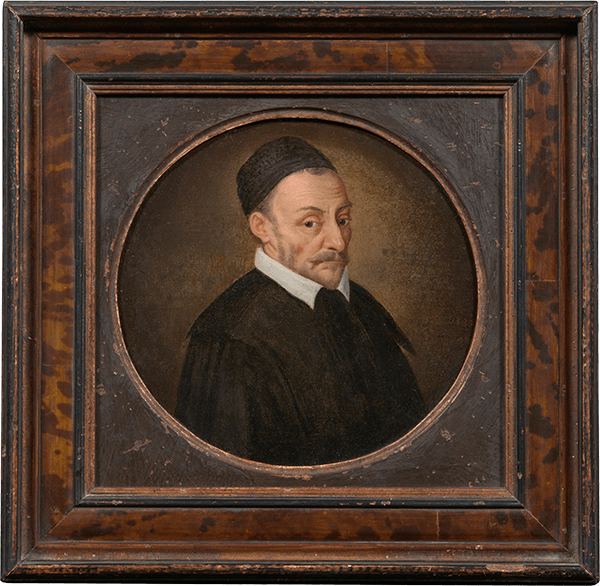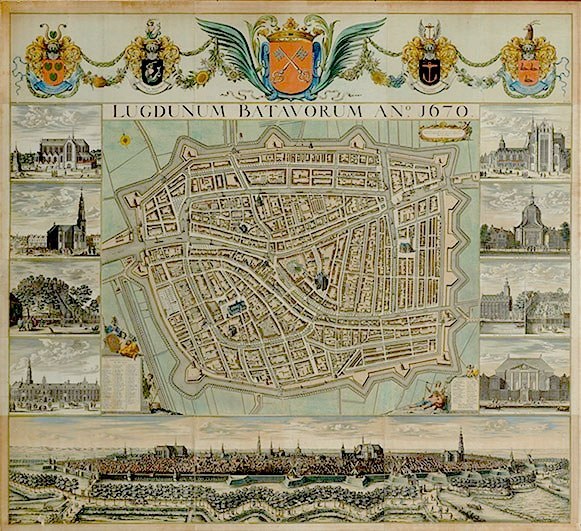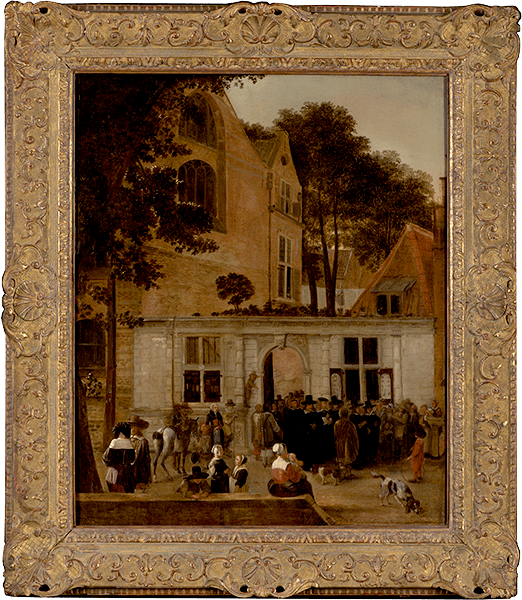It all started with William of Orange: this prince and leader of the Dutch Revolt founded Leiden University on 8 February 1575. He wanted to train good administrators and Protestant clergymen. Freedom and empowerment were important principles for him. Like the University’s founder, Carel Stolker also joined in the sometimes fierce discussions about these fundamental values. The monogram A.W. can be seen at the bottom right of the portrait, but the maker is unknown. This may have been intentional because it was dangerous at that time to sympathise with the rebellious prince. The panel is fairly small (h. 31 x w. 32 cm), making it easy to transport in secret.




